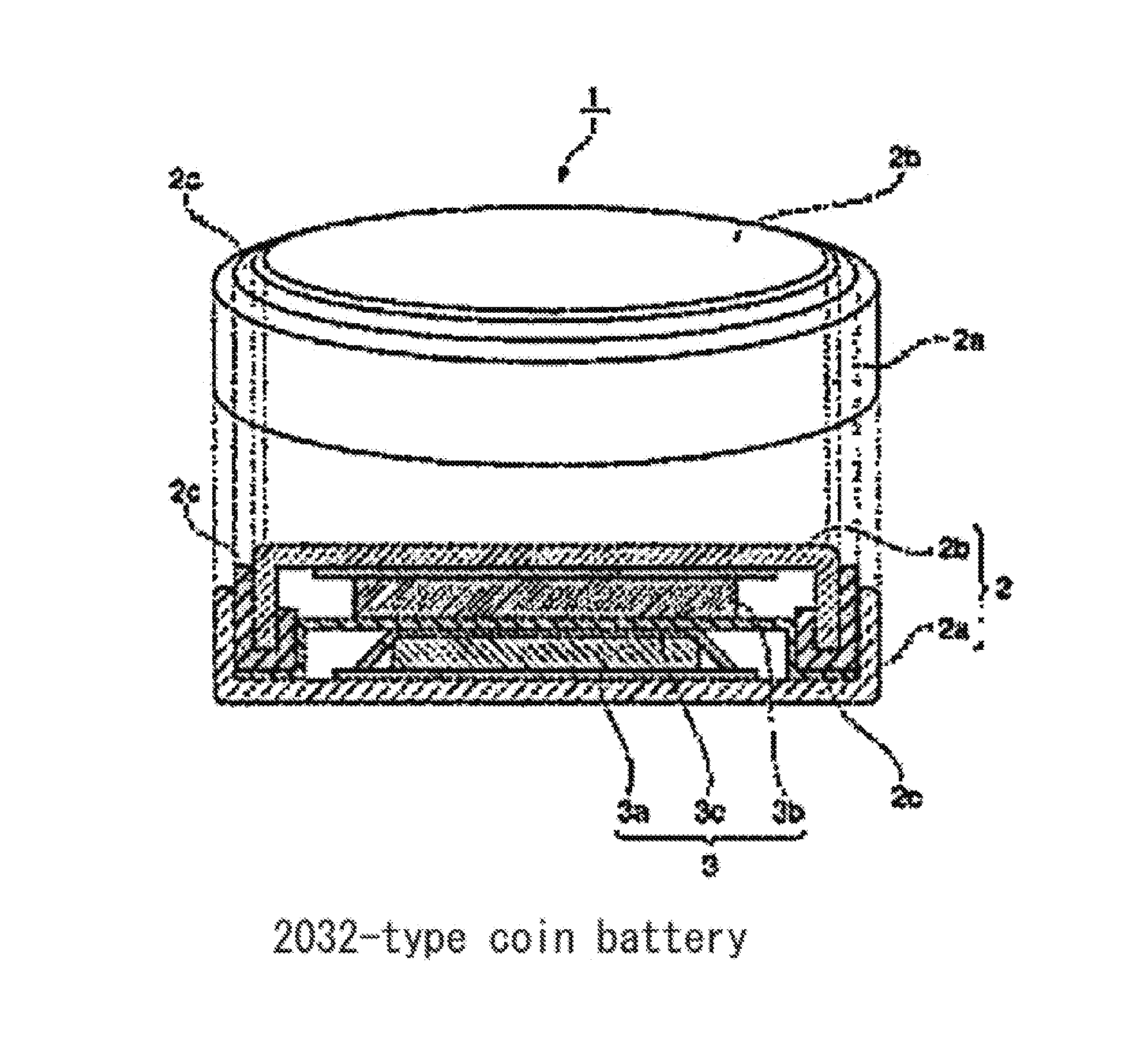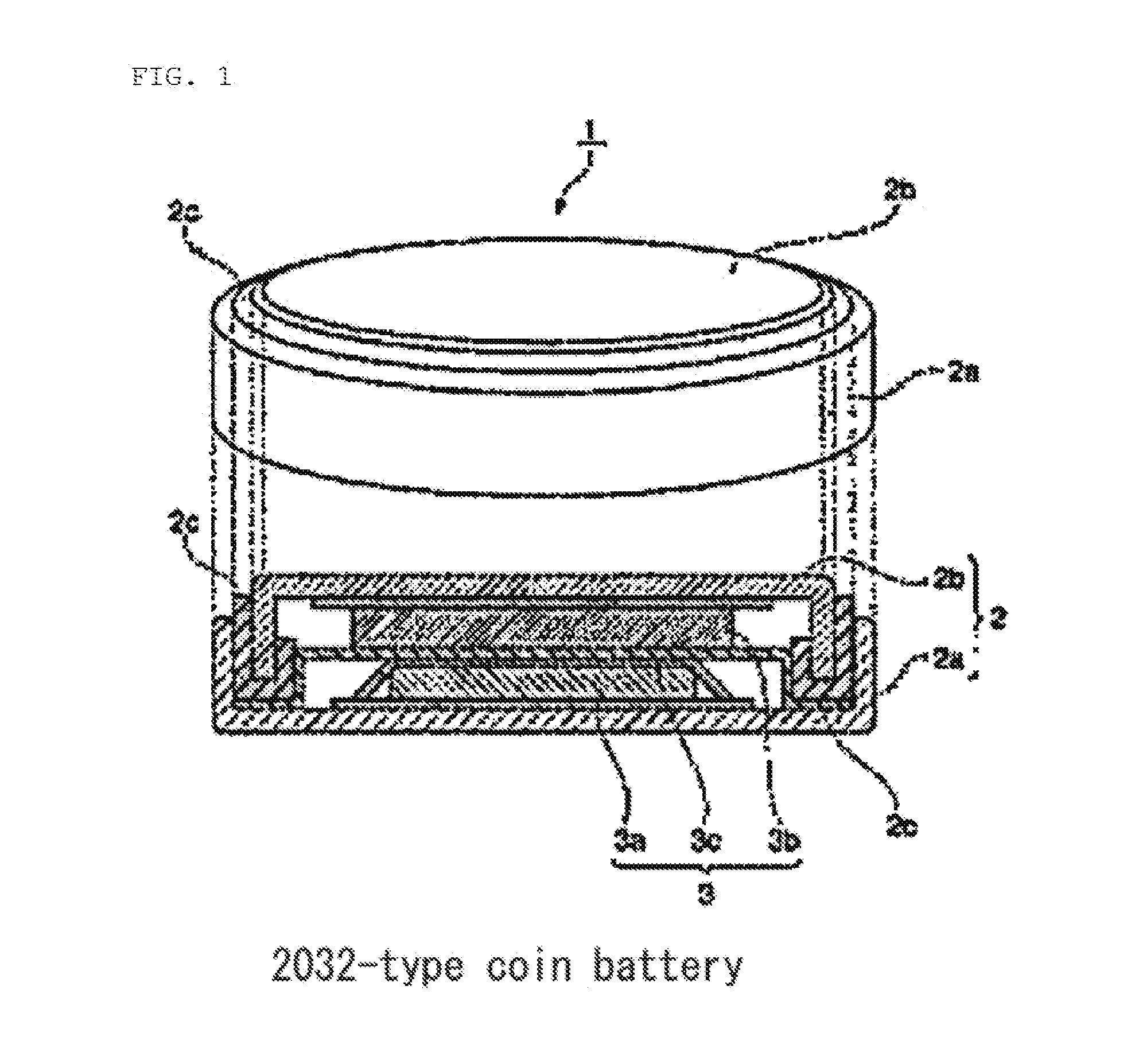Method for producing positive electrode active material for nonaqueous electrolyte secondary batteries, positive electrode active material for nonaqueous electrolyte secondary batteries, and nonaqueous electrolyte secondary battery
- Summary
- Abstract
- Description
- Claims
- Application Information
AI Technical Summary
Benefits of technology
Problems solved by technology
Method used
Image
Examples
examples
[0099]Hereafter, the present invention will be specifically described using Examples. However, the present invention is not limited to these Examples. The Examples of the present invention were evaluated using the following method.
1. Evaluation Method
1) Evaluation of Water Resistance and Moisture Resistance of Coated Positive Electrode Active Material
[0100]The water resistance was evaluated by adding 1 g of the positive electrode active material to 50 ml of pure water of 24° C., stirring the solution, leaving it alone for 60 minutes, and then measuring the pH and conductivity. The moisture resistance was evaluated by exposing the positive electrode active material to a thermohygrostat of 30° C. and 70% RH for 6 days and then obtaining the rate of increase of the mass thereof after the exposure with respect to the mass thereof before the exposure.
2) Production of Battery and Evaluation of Battery Characteristics Production of Battery
[0101]To evaluate the positive electrode active mat...
example 2
[0114]A positive electrode active material was obtained and evaluated as in Example 1 except that 0.2 part by mass of hydroxyl-containing polydimethylsiloxane, 0.1 part by mass of propylene glycol, 0.2 part by mass of the fine carbon particles from the dispersion liquid, 0.02 part by mass of the polycarboxylic acid polymeric dispersant, and 4.9 parts by mass of 2-propanol were added to prepare a mixture. The viscosity of the mixture was 560 mPa·S.
[0115]The initial discharge capacity of the obtained positive electrode active material was 201 mAh / g, and the positive electrode resistance thereof was 1.2. The pH indicating the evaluation of water resistance was 10.3; the conductivity was 120 μS / cm; and the rate of mass increase indicating the evaluation of moisture resistance was 0.7%. In the gelation evaluation, even after left alone at room temperature for two weeks, the positive electrode mixture material paste did not gel. The mixing ratio among the components, the characteristic va...
example 3
[0116]A positive electrode active material was obtained and evaluated as in Example 1 except that 0.2 part by mass of hydroxyl-containing polydimethylsiloxane of another type (KPN3504 available from Shin-Etsu Chemical Co., Ltd), 0.1 part by mass of propylene glycol, 0.2 part by mass of the fine carbon particles from the dispersion liquid, 0.02 part by mass of the polycarboxylic acid polymeric dispersant, and 4.9 parts by mass of 2-propanol were added to prepare a mixture. The viscosity of the mixture was 610 mPa·S.
[0117]The initial discharge capacity of the obtained positive electrode active material was 198 mAh / g, and the positive electrode resistance thereof was 1.2. The pH indicating the evaluation of water resistance was 10.1; the conductivity was 90 μS / cm; and the rate of mass increase indicating the evaluation of moisture resistance was 0.6%. In the gelation evaluation, even after left alone at room temperature for two weeks, the positive electrode mixture material paste did n...
PUM
 Login to View More
Login to View More Abstract
Description
Claims
Application Information
 Login to View More
Login to View More - R&D
- Intellectual Property
- Life Sciences
- Materials
- Tech Scout
- Unparalleled Data Quality
- Higher Quality Content
- 60% Fewer Hallucinations
Browse by: Latest US Patents, China's latest patents, Technical Efficacy Thesaurus, Application Domain, Technology Topic, Popular Technical Reports.
© 2025 PatSnap. All rights reserved.Legal|Privacy policy|Modern Slavery Act Transparency Statement|Sitemap|About US| Contact US: help@patsnap.com


